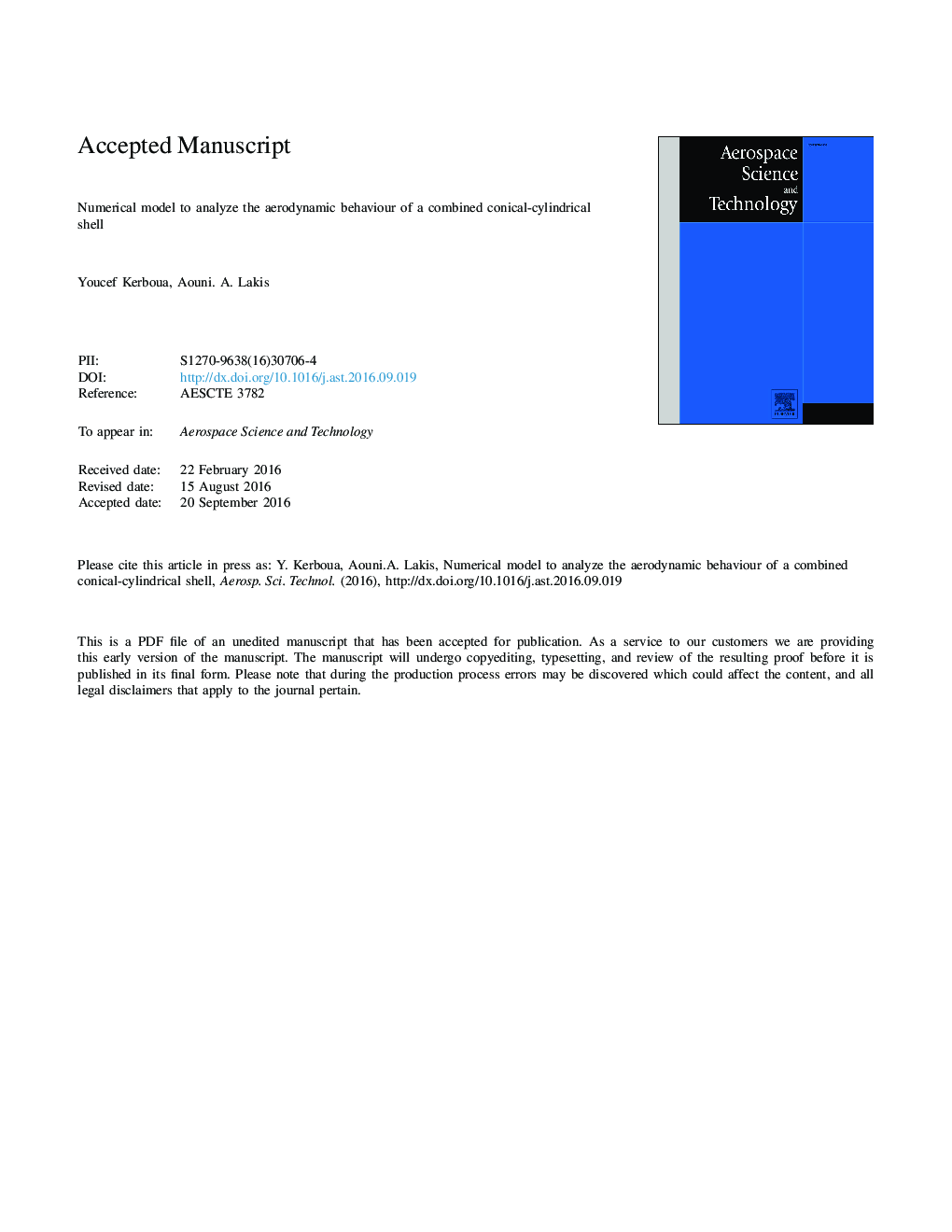| Article ID | Journal | Published Year | Pages | File Type |
|---|---|---|---|---|
| 8058529 | Aerospace Science and Technology | 2016 | 41 Pages |
Abstract
A numerical model is presented in this paper to simulate the aerodynamic behavior of combined conical-cylindrical shells. This class of structures is of great interest due to its extensive use in aeronautical and aerospace applications. Two distinct semi-analytical finite elements are used to model a combined axisymmetric shell for better geometrical consistency. The structural formulation is a combination of the finite element method and classical shell theory. The displacement functions of each finite element are derived from exact solutions of Sanders' shell equilibrium equations. The linearized first-order piston theory formula is applied to take into account the aerodynamic interaction effect. For a liquid contained in the combined shell, the fluid pressure is derived from the velocity potential, Bernoulli equation and from the impermeability condition applied to ensure permanent coupling at the fluid-solid interface. Initial stress stiffening due to axial compression and/or radial pressure is accounted for by generating an additional stiffness matrix. The elementary matrices of the solid and fluid corresponding to each finite element are calculated using exact analytical integration. Results obtained using the present approach in various conditions such as under vacuum, filled with liquid and subjected to supersonic flow are compared to those in published experimental or numerical works. Good agreement is found.
Related Topics
Physical Sciences and Engineering
Engineering
Aerospace Engineering
Authors
Youcef Kerboua, Aouni A. Lakis,
